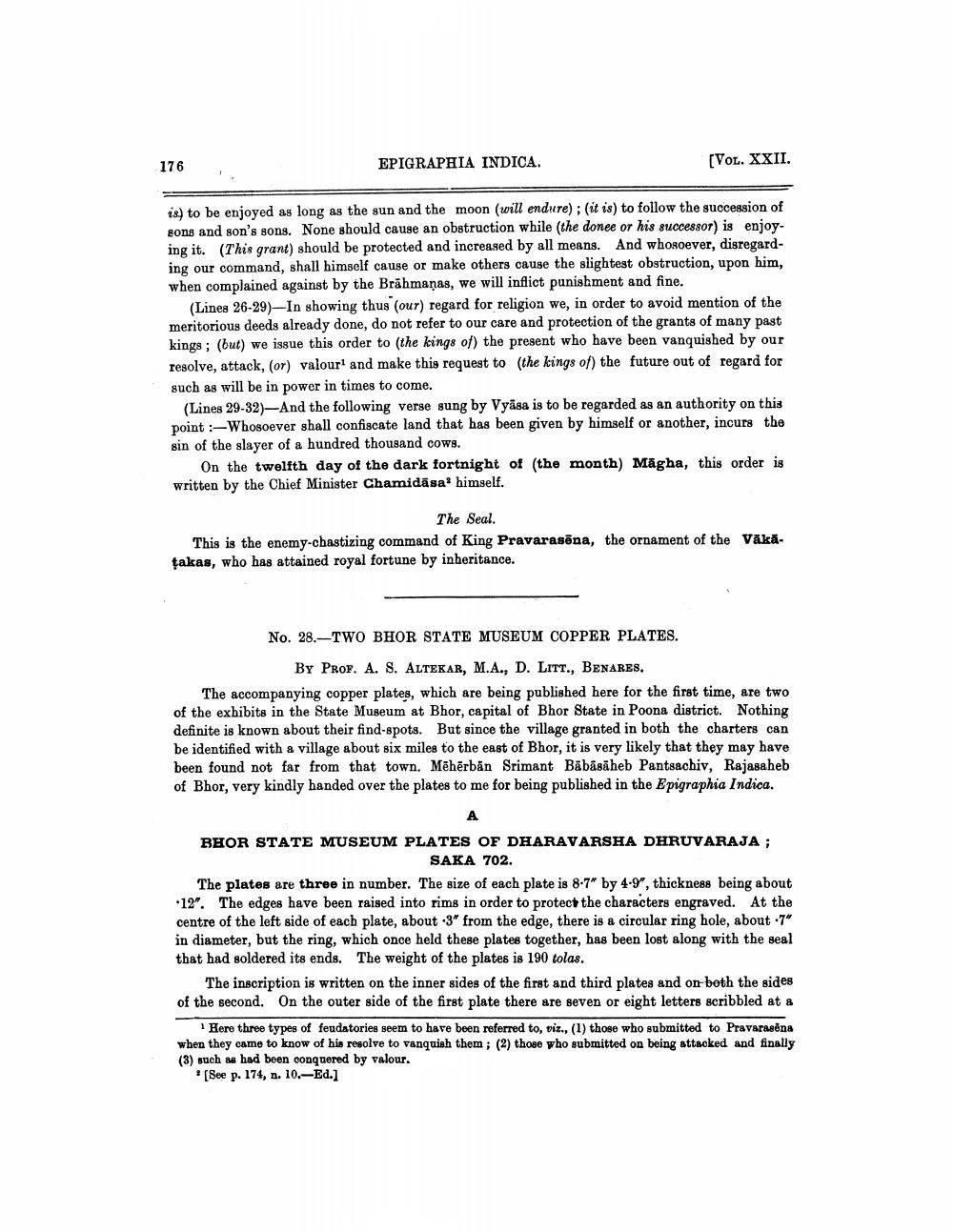________________
176
EPIGRAPHIA INDICA.
[VOL. XXII.
is) to be enjoyed as long as the sun and the moon (will endure); (it is) to follow the guccession of sons and son's sons. None should cause an obstruction while (the donee or his successor) is enjoying it. (This grant) should be protected and increased by all means. And whosoever, disregarding our command, shall himself cause or make others cause the slightest obstruction, upon him, when complained against by the Brāhmaṇas, we will inflict punishment and fine.
(Lines 26-29)- In showing thus (our) regard for religion we, in order to avoid mention of the meritorious deeds already done, do not refer to our care and protection of the grants of many past kings; (but) we issue this order to the kings of) the present who have been vanquished by our resolve, attack, (or) valour and make this request to the kings of the future out of regard for such as will be in power in times to come.
(Lines 29-32)—And the following verse sung by Vyása is to be regarded as an authority on this point :-Whosoever shall confiscate land that has been given by himself or another, incurs the sin of the slayer of a hundred thousand cows.
On the twelfth day of the dark fortnight of the month) Māgha, this order is written by the Chief Minister Chamidāsa himself.
The Seal. This is the enemy-chastizing command of King Pravarasēna, the ornament of the Vakatakas, who has attained royal fortune by inheritance.
No. 28.-TWO BHOR STATE MUSEUM COPPER PLATES.
BY PROF. A. S. ALTEKAR, M.A., D. LITT., BENARES. The accompanying copper plates, which are being published here for the first time, are two of the exhibits in the State Museum at Bhor, capital of Bhor State in Poona district. Nothing definite is known about their find-spots. But since the village granted in both the charters can be identified with a village about six miles to the east of Bhor, it is very likely that they may have been found not far from that town. Mēhērbān Srimant Babasaheb Pantsachiv, Rajasaheb of Bhor, very kindly handed over the plates to me for being published in the Epigraphia Indica.
BHOR STATE MUSEUM PLATES OF DHARAVARSHA DHRUVARAJA;
SAKA 702. The plates are three in number. The size of each plate is 8-7" by 4.9", thickness being about 12". The edges have been raised into rims in order to protect the characters engraved. At the centre of the left side of each plate, about 3" from the edge, there is a circular ring hole, about .7" in diameter, but the ring, which once held these plates together, has been lost along with the seal that had soldered its ends. The weight of the plates is 190 tolas.
The inscription is written on the inner sides of the first and third plates and on both the sides of the second. On the outer side of the first plate there are seven or eight letters scribbled at &
Here three types of feudatories seem to have been referred to, viz., (1) those who submitted to Pravarasēna when they came to know of his resolve to vanquish them; (2) those who submitted on being attacked and finally (3) such as had been conquered by valour.
[See p. 174, n. 10.-Ed.]




